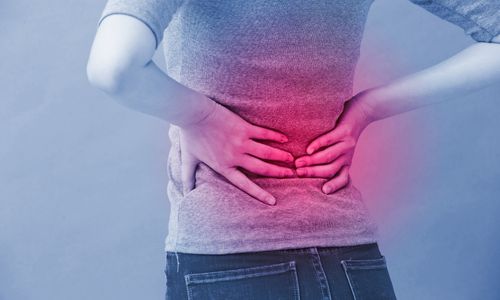Lower Back Pain – what is the best remedial action to take
Many of you suffer from lower back pain on an on-going basis due to an injury or condition, or intermittently, due to environmental factors or functional stress. This article will give you a quick overview of the most common causes and the best remedial action to take.
Condition or Circumstance?
Firstly, it's important to differentiate if your lower back pain is due to a particular condition/injury or whether it's due to your day to day activities or function.
Let’s be honest, we don’t always respect our bodies and we sit, stand, slump and lift in ways which aren’t necessarily the best for our backs. It’s only until our body tells us there’s a problem and usually by way of some form of discomfort, pain or change in mobility, that we pay attention to our problem causing behaviours.
Circumstance
The majority of the time, if your back pain is due to poor environmental factors/functional stress, an immediate and positive change in these will always produce a relatively quick and noticeable fix, in terms of alleviating your lower back pain.
If you do any of the following, it's time to make a few changes:
- Sit on the sofa with your laptop on your lap, rounding your shoulders and straining your neck
- Sit at a table which is too high or too low, meaning strain is put on upper back, neck, shoulders and the wrists and elbows
- Sit in a slightly rotated position at your desk, causing incorrect spinal and pelvic alignment
- Sit on the edge of your chair, without properly supporting your back
- Work without taking regular breaks, meaning hip flexor muscles shorten and the hips and lower back get tight
Remedial Action:
- Sit at a designated work space with an appropriate chair, desk and computer setup, to promote good posture and comfort
- Sit in a central position with forearms running parallel to your thighs at a 90 degree angle. Ankles are to be stacked under the knees and elbows under the shoulders.
- Sit with your back into the chair, to give your back full support, so you won’t slump
- Take regular breaks, even if just for a few minutes to help maintain mobility and to prevent tightness
Condition
If your lower back pain is due to a condition or injury, recovery tends to take a little longer and any changes and rehab treatments are generally more targeted and considered. You will most likely be talking to other health professionals, such as your GP or a Musculoskeletal Consultant.
There are too many potential conditions and injuries to cover here, however, we do have a series of Condition Infosheets which discuss these in more detail. Click here to find out more.
Please ensure you stay consistent with your treatment and that you engage in some form of maintenance in between those treatments. Treatments alone will not be enough to resolve your lower back pain.
Why Do We Get Back Pain?
We often find that when muscles tighten, they pull the spine, pelvis, hips and sometimes ribs out of alignment, which can cause discomfort, aches and pains. Skeletal malalignment can also be caused by day to day activities or by a specific injury or condition.
Whenever there is a pain point in the body, we treat it as the mid point and look at the areas around that mid point to assess what is going on in terms of tension, tightness and alignment.
Key muscles to pay attention to:
By keeping these muscles in particular strong and in good condition, it will help to alleviate and minimise any lower back pain
Abdominals - stomach muscles at front of torso
QL or Quadratus Lumborum - muscle in lower back connecting to pelvis, lower spine and lower ribs
Gluteal Muscles - buttocks
Erector Spinae - long thick muscles running the full length of the spine from pelvis to skull
Hamstrings - back of thigh
Quadriceps - front of thigh
Remedial Action
Keep It Strong
Do exercises that target the glutes, lower back and core to keep your back healthy
Good examples are:
- Pilates - matt or reformer. The later is highly recommended for faster and more targeted results in core muscle strength
- Squats - normal, deep, sumo
- Lunges - normal, walking and runners
- Planks - forearm or extended arm
- Sit Ups - low crunches, full sit ups and oblique crunches
- Light cycling and walking
Keep It Stable
Regular Osteopathy appointments are recommended to ensure skeletal integrity and alignment.
Keep It Tension Free
Regular Massage treatments will ensure tension and tightness in your muscles are reduced, easing any unnecessary pressure on your joints. At least once a month is recommended.
Using a foam roller in between massages will also help you get the most from your treatments and promote reduced muscle tension and tightness for longer.
Maintain Good Posture
Pay attention to how you use your body. See how you can improve your seating position, your desk setup, the equipment you use, as well as how you lift and how you stand.
Working from home has brought the working environment to the forefront and it's worth giving your working environment the appropriate attention by way of ergonomic assessments. These are something with which your employer should be able to provide you. Ask your HR or Occupational Health Department.
If this isn’t an option, click on the following link from HSE: https://www.hse.gov.uk/home-working/employer/display-screen-equipment-at-home.htm, who will talk you through a tutorial on how to ensure your working environment, equipment and posture are set up correctly.
Useful Equipment
All of the below equipment is available from our Partner Providers, Physique at 10% discount using the code: BODYMECHANICS
- Foam roller
- Physio balls
- Heat cream and patches
- Ice gel and packs
- Resistance bands
- Yoga mat
- Yoga belt
- Yoga brick

To Sum Up
Lower back pain can happen for a multitude of reasons, many of which may be caused through a lack of awareness or attention. In many cases, lower back pain can be resolved by focusing on your strength, levels of tension and tightness, flexibility, stability and your overall posture as referenced above.
If you do have a particular injury or condition, it’s important to understand the cause, the symptoms, the treatment and the (on-going) maintenance required.
However your lower back pain has occurred, consistency is key!

